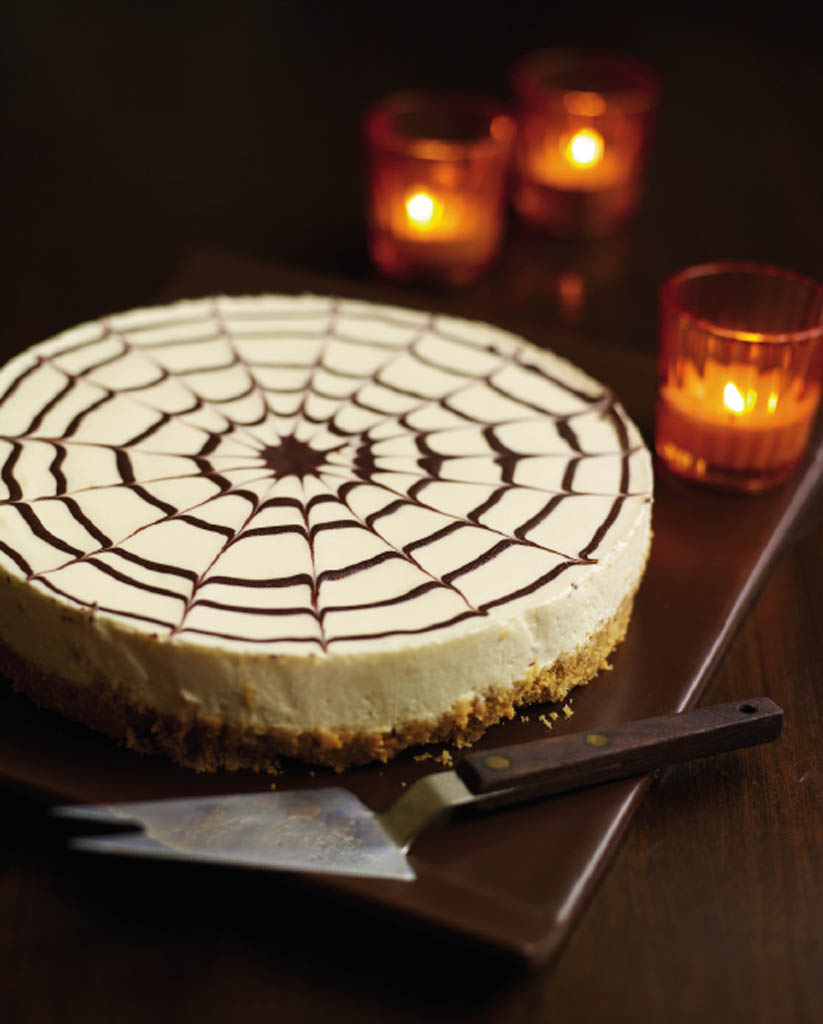
A perfect addition to spooky Halloween festivities that children will love, you could even add spider decorations to this cheesecake for a full spider-web effect.
Serves 8–12
FOR THE BISCUIT BASE
220g (8oz) digestive biscuits
100g (3½oz) unsalted butter, melted
FOR THE CHEESECAKE TOPPING
4 leaves of gelatine
600g (1lb 5oz) full-fat cream cheese (such as Philadelphia)
110g (4oz) caster sugar
1 tsp vanilla essence
½ tsp finely grated lemon zest
200ml (7fl oz) double cream
60g (2oz) dark chocolate (minimum 70% cocoa solids)
One 20cm (8in) diameter spring-form cake tin
Piping bag with a fine (no. 2) writing nozzle
1. Line the base of the cake tin with baking parchment, then, in a food processor, whiz the digestive biscuits into fine crumbs using the blade attachment. Alternatively, place the biscuits in a plastic bag, seal it shut and crush with a rolling pin.
2. Tip the biscuit crumbs into a bowl, pour over the melted butter and mix together with a spoon. Pour the buttery crumbs into the lined cake tin, pressing them into the base of the tin, then place in the fridge for 20–30 minutes to cool and set while you make the topping.
3. Place the gelatine leaves in a bowl of tepid water to soften. Using a hand-held electric whisk or a freestanding electric mixer with the paddle attachment, mix together the cream cheese, sugar, vanilla essence and lemon zest until smooth. In a separate bowl, whisk the double cream until it forms soft peaks.
4. In a small saucepan, on a very low heat, melt approximately 200g (7oz) of the cream cheese mixture. Allow it to warm slightly, then remove from the heat, add the softened gelatine and let it melt in the cream cheese.
5. Add the remaining, cold cream cheese to the warm mixture in the pan, mixing it in 3 tablespoons at a time and stirring continuously. Carefully fold the whipped cream into the cheesecake mixture and then pour on to the prepared base in the tin. Smooth down the top of the cheesecake using a palette knife.
6. Break the chocolate into a glass bowl and melt over a pan of simmering water, then remove from the heat and allow to cool. Pour the chocolate into the piping bag and pipe on to the cheesecake in evenly spaced concentric circles. Using a toothpick or the point of a sharp knife, draw a fine line from the centre circle to the outer circle to create the spiderweb effect. Clean the toothpick or skewer after drawing each line.
7. Place the finished cheesecake in the fridge and allow it to set for a couple of hours, or preferably overnight.